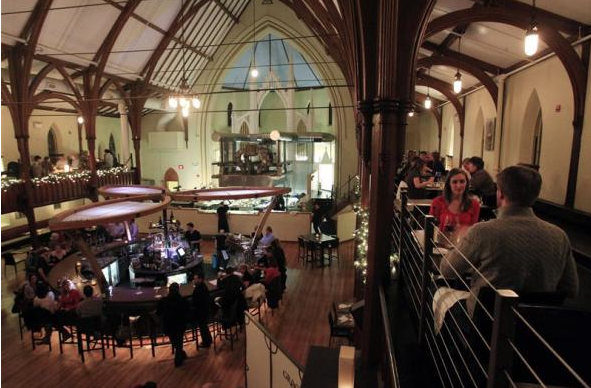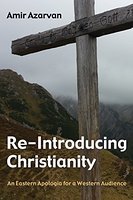Orthodox Apologetics for the 21st Century
Christian apologetics involves two tasks: (1) presenting the Good News of Christ in a way understandable to the audience at hand and (2) defending the Good News of Christ in a way that addresses the questions and objections that listeners may have. Apologetics involves a high level of communication. It is not a form of debate, but rather an attempt to speak to the listener’s intellectual questions, social context, and existential concerns. Doing it well calls for the ability to adapt one’s presentation of the message to one’s audience. When addressing the Jews, the Apostle Paul cited the Torah, but when he spoke to the Greek philosophers in Athens, he quoted from the poet Aratus’ work, Phaenomena.
An overview of Christian apologetics reveals diversity in style and approaches. In the early Church, there was a group, known as Apologists, whose goal was to: (1) present Jesus as the promised Messiah to Jews; (2) commend the Gospel to polytheistic Greeks and Romans; and (3) defend Christians against accusations brought against them before the Roman government. Among the early apologetics works are Epistle to Diognetus, Athenagoras’ Plea, Justin Martyr’s Dialogue with Trypho, and Tertullian’s The Apology.
Protestant apologetics range from the rationalistic presuppositional apologetics of Cornelius Van Til and Francis Schaeffer, to the forensic, evidential approach favored by Josh McDowell’s well known Evidence That Demands a Verdict.
Some of the best Christian apologetics can be found in Roman Catholics like G.K. Chesterton, whose paradoxical one-liners give the reader an inverted view of reality that often leads to spiritual enlightenment, or Anglicans like C.S. Lewis whose apologetics style combines reason with imagination. (See Louis A. Markos’ “Literary Apologetics.”)
The book Re-Inventing Christianity points to a new kind of Orthodox apologetics. Up till now some of best Orthodox apologetics were written to a Christian audience or to an audience familiar with the Christian religion, e.g., Timothy Ware’s The Orthodox Church. While undoubtedly a classic, many readers found the book difficult to understand. Part of the problem lies with the ornate prose style favored by British academics. Peter Gillquist’s Becoming Orthodox and Matthew Gallatin’s Searching for God in a Land of Shallow Wells are written in a style more familiar to American Evangelicals. However as American society becomes increasingly post-Christian, a new kind of apologetics is needed that speaks to a mixed audience that is both Christian and post-Christian.
Re-Introducing Christianity: An Eastern Apologia for a Western Audience was published by Wipf and Stock in the spring of 2016. The book attempts to speak to a diverse twenty-first century audience that ranges from devout Protestants to disenchanted post-Evangelicals to post-Christian Nones. Under the Amir Azarvan’s editorial leadership, some twenty authors of diverse backgrounds contributed chapters on Orthodoxy (including this writer). The contributors were instructed to make their contributions short and readable. Many of the chapters are brief but packed with information. Below are some of the book’s highlights. I have grouped them along the lines of different apologetics tasks.
I. Basic Questions About God and About Jesus
- Fr. Jonathan Tobias’ chapter, “The Reality of God,” sketches how Cartesian dualism has influenced our understanding of modern science in a way that excludes the reality of God and how quantum mechanics’ refutation of the observer/observed dichotomy provides an alternative understanding of reality that is open to the reality of God.
- Many nowadays have grown up in a post-Christian society where bizarre ideas about Jesus are being circulated in the popular media. Although clearly fictional, Dan Brown’s The Da Vinci Code has popularized many of these ideas. Eugenia Constantinou’s chapter, “The Historical Jesus,” addresses some of the basic questions post-Christians might have about Jesus: (1) Did Jesus even exist? (2) What happened during the “lost years” of his childhood?, and (3) Was Jesus married?
II. Protestant Questions About Orthodoxy
- Protestants interested in Orthodoxy will be interested in Fr. John Whiteford’s chapter, “Bible Only?,” in which he critically examines one of the core beliefs of Protestantism.
- Fr. Steven Ritter examines another of Protestantism’s key teachings in “Are We Saved by Faith Alone?” On a closely related topic is eternal security which is scrutinized by Joshua Packwood in “Once Saved, Always Saved?”
- Protestants concerned about the Orthodox veneration of icons will want to read my chapter, “Are We Violating the Second Commandment? The Orthodox Teaching on Icons.” I’ve already written extensively on this subject matter on the OrthodoxBridge. This short chapter – only four pages – condenses the main points of my apologia for icons.
- Many Protestants and their churches eschew “scripted” prayer for spontaneous prayer that “comes from the heart.” They assume this is the normal way Christians pray. Deacon Michael Bressem chapter, “Why We Recite ‘Scripted’ Prayers,” brings to light the surprising fact that this way of praying is relatively new and can be traced back to the English Puritans of the 1600s. His excerpt of John Bunyan’s diatribe against liturgical prayer is eye opening.
III. Hard Questions About the Orthodox Church
- Many Westerners today having become disenchanted with the prevailing rationalism of mainstream culture are turning East in their quest for an experiential and mystical pathway to Reality. Kyriacos Markides in “The Three-Fold Way” describes the Orthodox teaching of the healing and restoration of the soul to its original divine state via askesis.
- As Orthodoxy’s presence in America grows, people will form initial impressions which often lead to hard questions that must be answered. One impression is that Orthodoxy seems ethno-centric. Fr. Ernesto Obregon addresses this concern in “Is Orthodoxy an Ethnically Exclusive Religion?” Another issue is Orthodoxy’s all male priesthood which is addressed in Sister Margarete Roeber’s chapter “Respect for Women and the Tradition of the Male Priesthood.”

Post-Christian America — Methodist Church Converted into Restaurant source
Speaking to Twenty-First Century America
The future prospects for Orthodoxy’s growth in a post-Christian America depends on its members being able to being able to explain to their family members, friends, colleagues, and even passing acquaintances what Orthodoxy is and the reasons why they are Orthodox Christians. Much will also depend on the spirit in which Orthodox outreach is done. Orthodox apologetics at its best is not combative, but conversational. Amir Arzavan wrote in his introductory chapter:
…our goal is to communicate in an honest, yet non-adversarial way, the following message to the reader: “Here is why we invite you to explore the faith that has brought us so much hope and joy.” (p. 9)
Recommendation
Re-Introducing Christianity is a book that speaks to the rapidly changing religious landscape of twenty-first century America. I recommend it for the following audiences:
- Seekers looking for a more authentic Christianity different from the many modern offshoots that populate the religious marketplace these days,
- Christians and non-Christians seeking reasonable answers to contemporary critiques of the Christian religion, and
- Orthodox Christians who want to commend Orthodox Christianity is to their friends and family in these troubled and tumultuous times.
Robert Arakaki
Copies may be ordered from Amazon or Wipf and Stock Publishers.

Thanks! ordered a copy for my kindle.